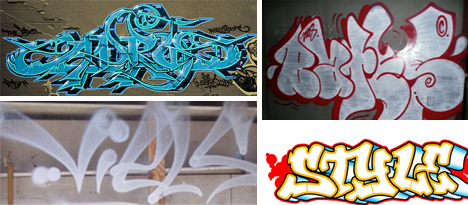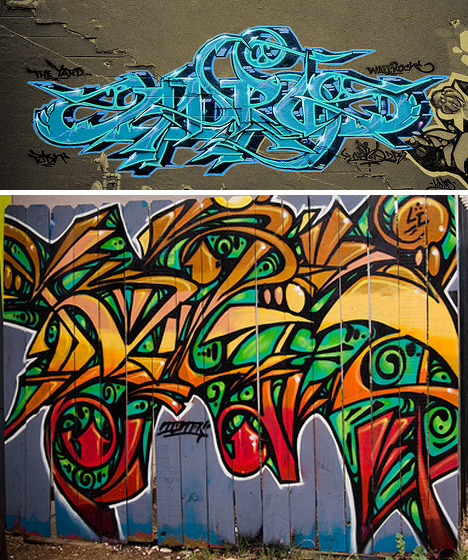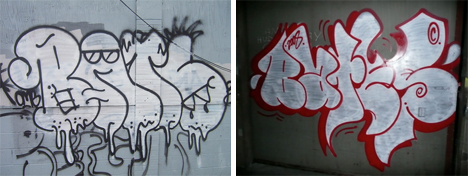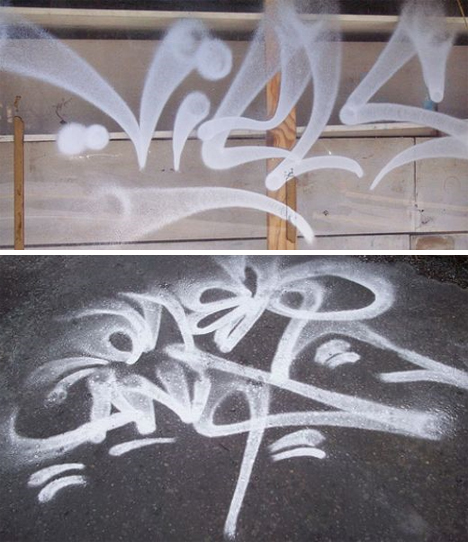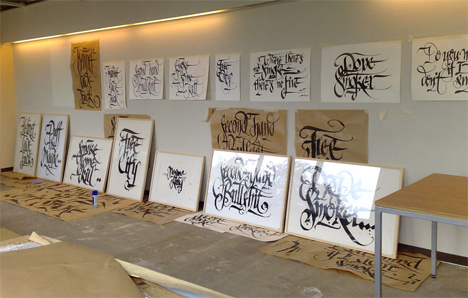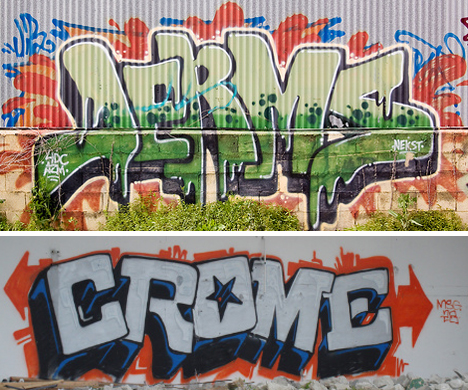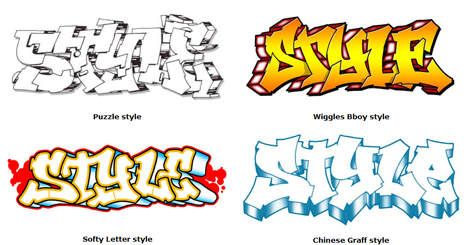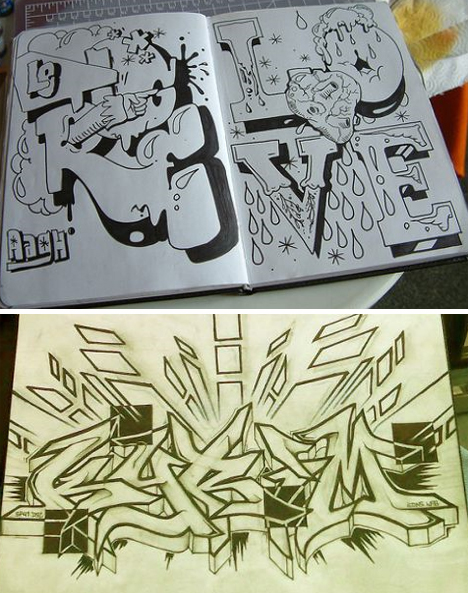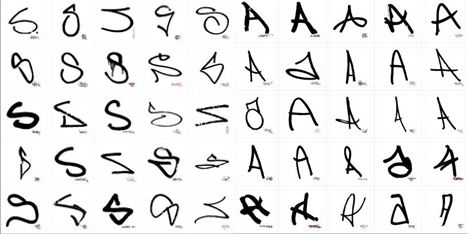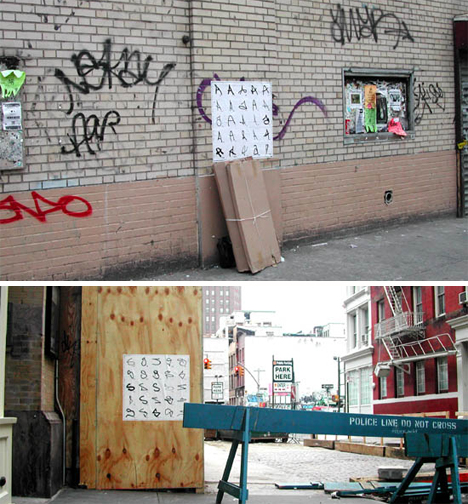Not only are there different types of graffiti; there are also plenty of different lettering styles used by graffiti writers. Many of them were designed by graffiti writers in the beginning years of urban graffiti, in the 1970s and 1980s. They’ve been imitated, expanded on, adapted and changed by graffiti artists all over the world. Whether you see graffiti as an art form or simple vandalism, it’s hard to deny that a lot of effort goes into recognizing and learning the different types of lettering, and developing a unique style.
Wildstyle
(images via: ferretfacejones)
Unfortunately, it’s hard to classify most types of graffiti lettering. The styles develop organically, with only loose foundations. Lettering styles can sometimes be traced back to the person who originally developed them. Such is the case with Wildstyle, which was first thought up and practiced by Tracy 168 and Stay High 149 in New York. Wildstyle graffiti is complex and often difficult to read for people who aren’t familiar with graffiti lettering. The style has taken off all over the world and has evolved as it’s been passed from continent to continent.
Bubble Letters
(images via: sparklemotion0 and 12oz Prophet)
A lot of graffiti lettering is done with bubble letters. Bubble letters can take many different forms, but basically they are fat letters, with or without a differently-colored outline. They’re the same type of bubble letters you used to use when doodling your name in your notebook in junior high school, usually overlapping each other. They’re normally easy to read and don’t have too many stylistic flourishes. Block letters are basically the same, but without the fat rounded appearance.
Fat Cap
(images via: Colin McDermott)
Fat cap lettering is done with a wide spray paint tips. Fat cap is a quick and easy type of lettering that doesn’t require a lot of pre-planning. It’s spontaneous and easy to read. Since it’s so simple, it’s not usually used in more complicated pieces; only in quick tags.
Calligraffiti
(image via: Calligraffiti.net)
Calligraffiti is a combination of calligraphy and graffiti invented by Amsterdam graffiti artist Shoe (also known as Niels Meulman). It’s a somewhat stylized but still easy-to-read lettering style. It brings together the best parts of calligraphy and graffiti by putting beautiful and artful letters into an urban setting.
Shadow Letters
(images via: ferretfacejones and 24hourhiphop)
Shadow letters are commonly found on throw-ups and in more complicated pieces. They use either block letters or bubble letters and feature a shadow behind each letter, making the lettering appear slightly 3D.
Online Graffiti
Of course, most of us will never use these lettering styles to create graffiti. But if you love the look of graffiti, there’s no reason you can’t use graffiti-type fonts in your personal projects. As graffiti has become more well-known and a bit more mainstream, several websites have begun offering downloadable graffiti fonts. The graphic above was created using Graffiti Creator’s “wavy” creator.
Puzzle, Wiggles, Softy and Chinese
As noted above, there are just too many styles of graffiti lettering to name them all. Even if they all had names, they tend to morph and combine when they’re used, making it very difficult to say with any certainty what style a particular piece is done in. If you’re interested in learning how to write in graffiti styles or just learning to recognize different lettering styles, it might be easier to look at the styles in their digital form, like the above examples from LearnGraffiti.net.
Graffiti Black Books
(images via: Colin McDermott)
Studying different graffiti lettering styles is how a lot of graffiti writers got their start. It’s common practice for writers to have a “black book,” which is basically a book of sketches for future pieces they plan to do. Black books can also contain sketches and signatures from other graffiti writers. These books are the way that most new writers learn lettering styles and develop their own style.
Graffiti Taxonomy
Studying and understanding graffiti lettering isn’t as simple as learning a single lettering style. Because there are so many styles which change from person to person and from day to day, there’s no way to catalog a definitive set of graffiti alphabets or fonts. But artist Evan Roth has developed a project to collect, identify and compare examples of each letter of the alphabet from existing graffiti tags. He’s still looking for funding to complete the project, but so far it looks like a fascinating view of the anatomy of graffiti letters.
